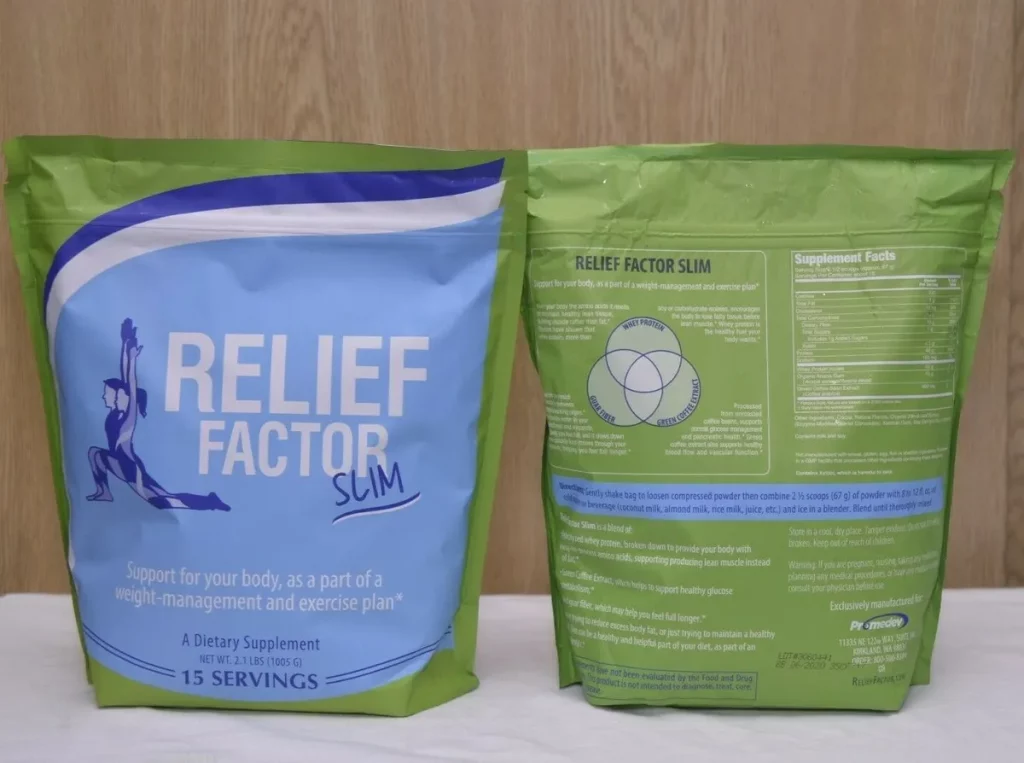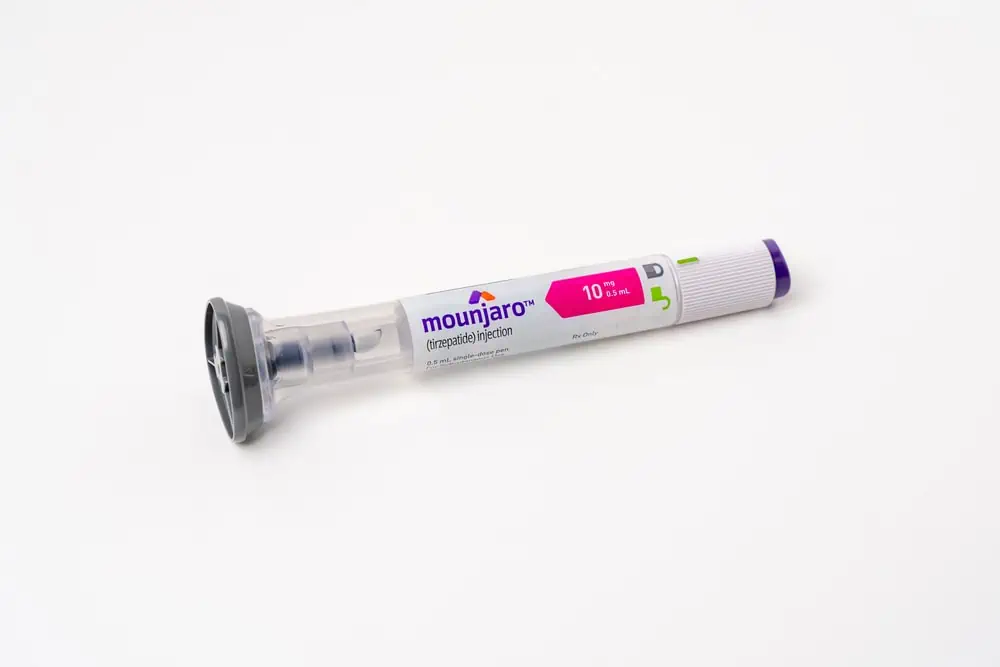Living with back pain can be a debilitating experience. However, incorporating stretching into your daily routine can significantly improve your spinal health and reduce discomfort.
To start your journey towards a more pain-free life, it’s crucial to embrace a stretching regimen that is safe, consistent, and tailored to your body’s needs. By doing so, you’ll not only ease existing pain, but also enhance your overall flexibility and contribute to long-term back health.

Stretching should be an equal blend of mindfulness and movement. A good warm-up prepares your muscles for the stretches ahead, while deep, controlled breathing helps relax the body, making stretches more effective.
Remember that gradual progression in a stretching routine is far more valuable than pushing too hard in a single session. Equally vital is ensuring you’re hydrated and never forcing a stretch to the point of pain. Below we will give you all of the information, and stretches to help back pain.
Key Takeaways
- Safe stretching practices, including warming up and hydration, are integral to managing back pain.
- Consistent and gentle stretching can greatly improve long-term back health and flexibility.
- A mindful approach to movement and breathing enhances the effectiveness of stretches to help relieve pain in your back.
Additional Stretches to help back pain, specifically Lower Back.
Stretches Involving Knees Toward the Chest for Alleviating Back Tension
Engaging in this movement helps align your pelvis and stretch the muscles of your lower back and buttocks. Begin by laying down with your feet facing upwards. Gently draw one knee to your chest, clasping it with your hands, and tug lightly toward your torso. Maintain the pose for 20 seconds before gradually returning to the initial position. Perform this action thrice for each leg, ensuring a careful and mindful stretch.
Please take care when stretching and exercising, especially if you have ongoing back issues. when followed regularly and correctly, these ‘stretches to help back pain’ can bring so much relief and ease to those painful areas of your back.
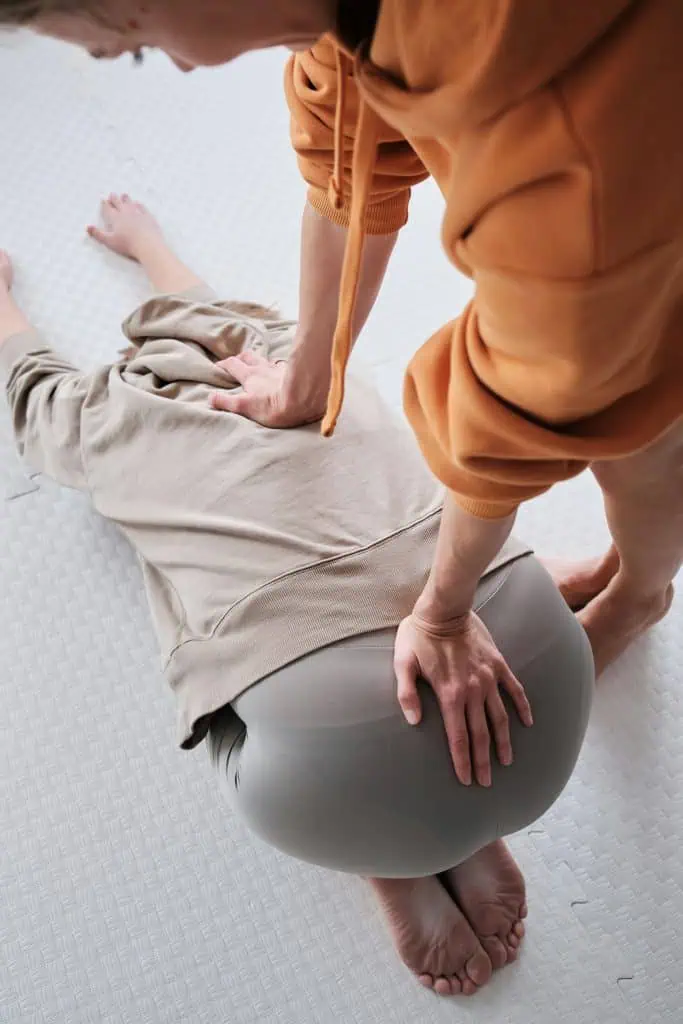
Stretches to help back pain
Supine Pelvic Rotation
This exercise is an excellent way to stretch the muscles alongside your spine and fortify your abdominal muscles. Start by lying flat and extending your legs. Cross one bent knee over the body to the other side and hold there for a gentle stretch in your back and glutes. Tighten your core as you return to the center. Three times on each side will enhance your core strength and flexibility.
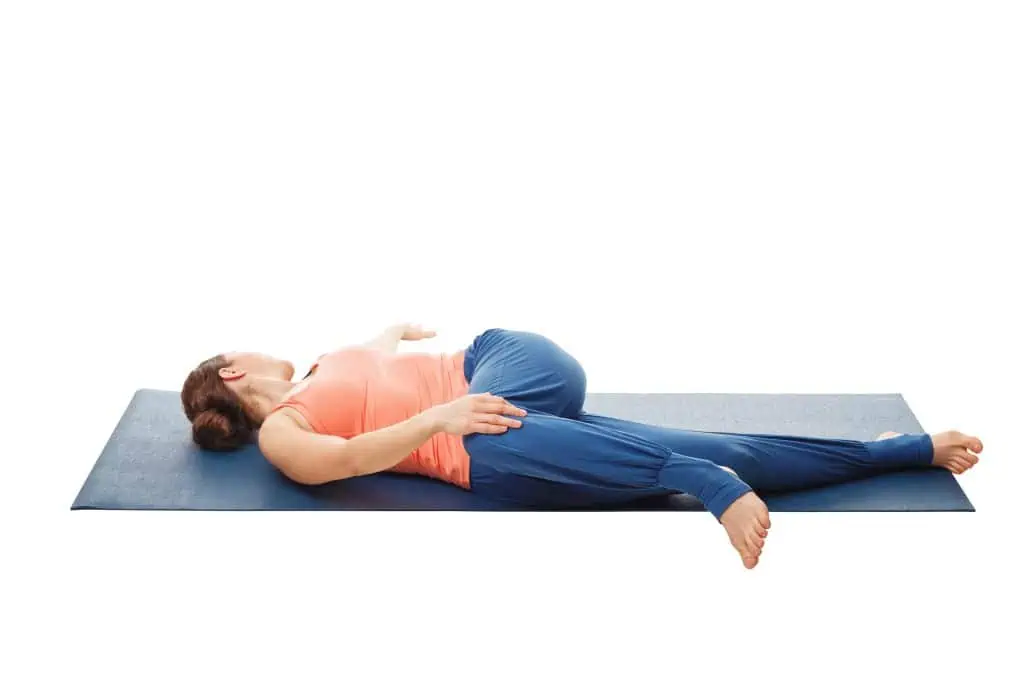
Alternating Arching and Rounding Back Stretch
Kneel on all fours, placing hands beneath shoulders and knees under hips. As you exhale, arch your spine gently and then inhale as you round your back, mimicking a cat. Perform these movements slowly, holding each for 5-10 seconds. This will improve spinal flexibility and should be repeated ten times.
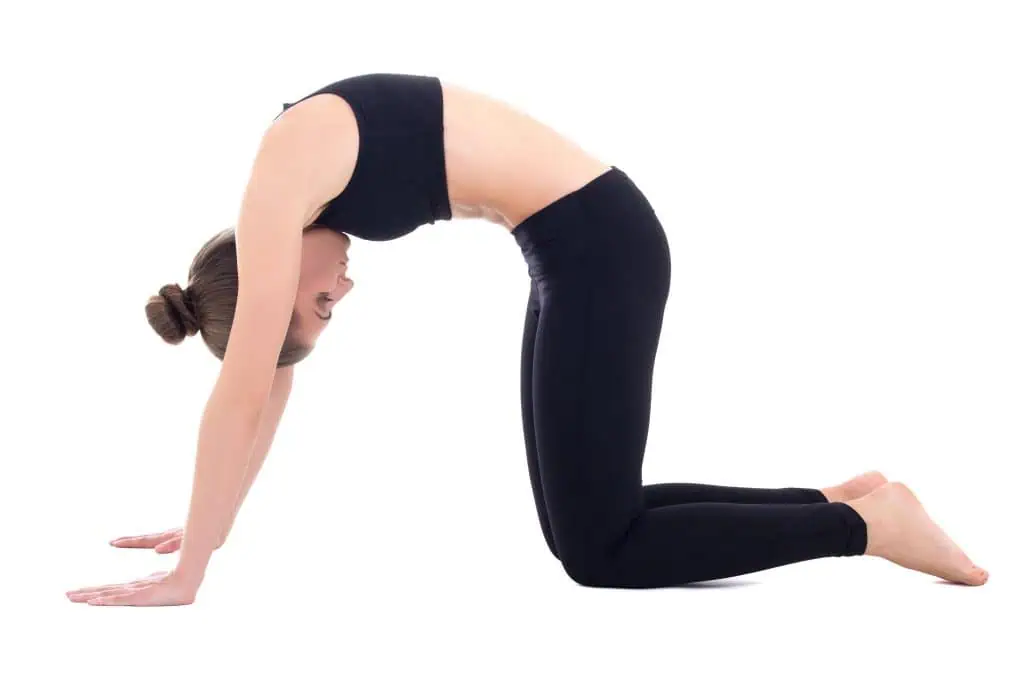
Stretch for the Piriformis While Seated
Target the piriformis muscle, which can contribute to sciatic pain if it’s tight, with this stretch. Maintain a straight posture while seated, cross one leg over the other near the thigh, and bring your second leg toward your buttock. Ease into a stretch while keeping a lifted chest. Hold each side for 20 seconds and switch three times.
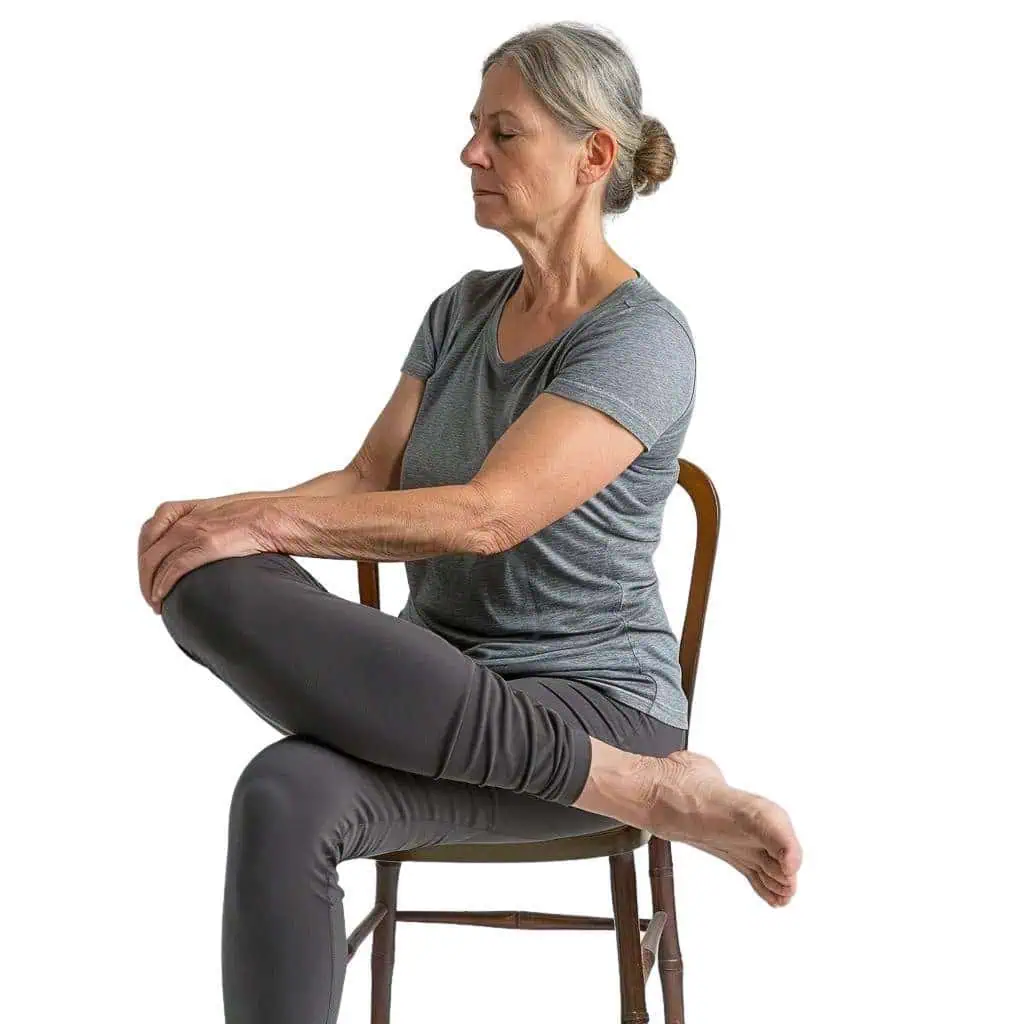
Abdominal Muscle and Lower Back Stretch
Known as the cobra stretch, lying on your stomach, with legs extended and palms next to your head on the floor, slowly elevate your upper body. Ensure hip contact with the ground and if your back permits, straighten your arms for a deeper stretch. Hold for 10 seconds and slowly lower down. Repeat five times for the best results.
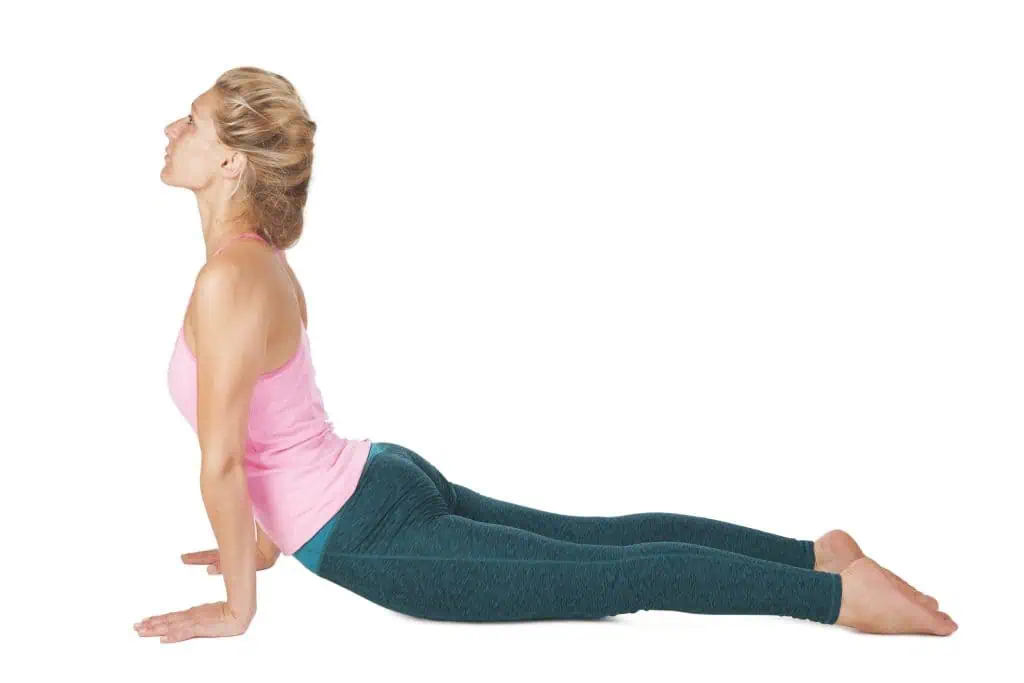
Posture of Relaxation
The child’s pose, prevalent in yoga, is ought to relax your body and provide a restful state. Position yourself on hands and knees, widen your knees, and push back to sit on your heels. Extend your arms and let your head drop to intensify the relaxation. Hold for 20 seconds and repeat this restorative pose three times, adjusting for shoulder discomfort if necessary.
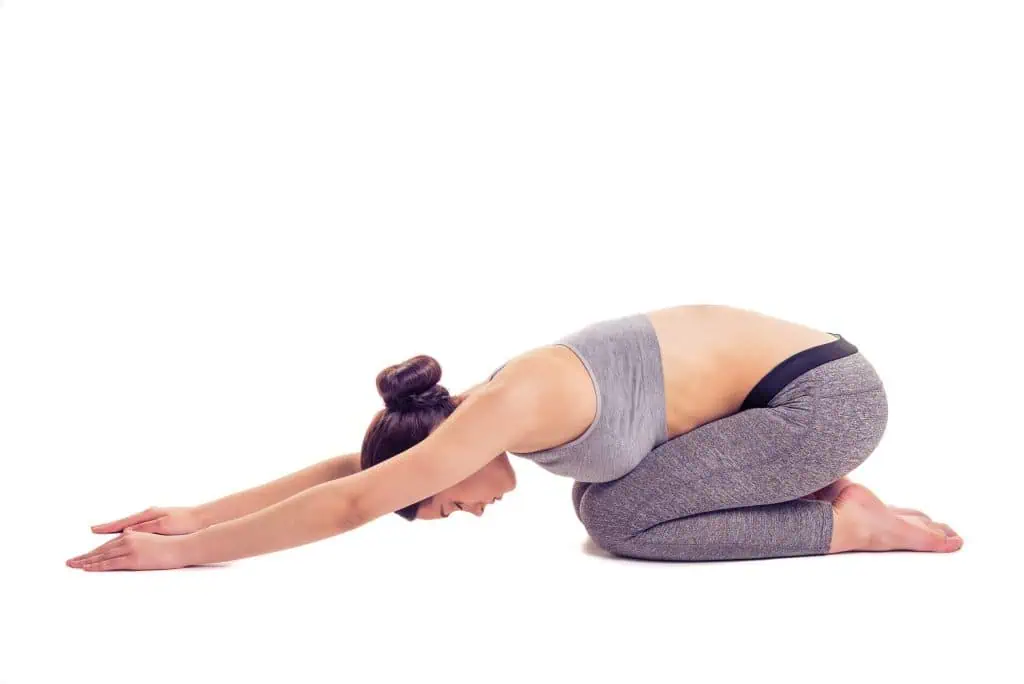
Stretching’s Influence on Managing Pain
- Immediate Relief: Engaging in stretching can offer a swift release from tense muscles and increase circulation.
- Long-Term Benefits: Regular, sustained stretching can lead to enhanced flexibility and pain relief, maintaining good posture, and mitigating muscle imbalance-induced discomfort.
Guidelines for Stretch Frequency and Repetition
- Begin by masterfully performing each stretch and gently easing into them, feeling a bit stiff at the outset.
- As flexibility increases, extend stretch durations and intensify gradually.
- Aim for daily practice, prioritizing consistency over intensity.
Specifics:
- Sphinx Pose & Prayer Pose: 20-30 seconds, repeat 2-3 times.
- Reverse Russian Twist: 10-15 repetitions per side, 1-2 sets.
- Spinal Rocks: Continue for 1-2 minutes.
- Hip Drop Stretch: 20-30 seconds each side, 2-3 repetitions.
Rotational Stretch for the Lower Back
This stretch alleviates tension and enhances spinal mobility. Lay back, bend your knees, and roll them gently to one side, keeping your shoulders grounded. Hold for 5-10 seconds, and perform 2-3 repetitions on each side.
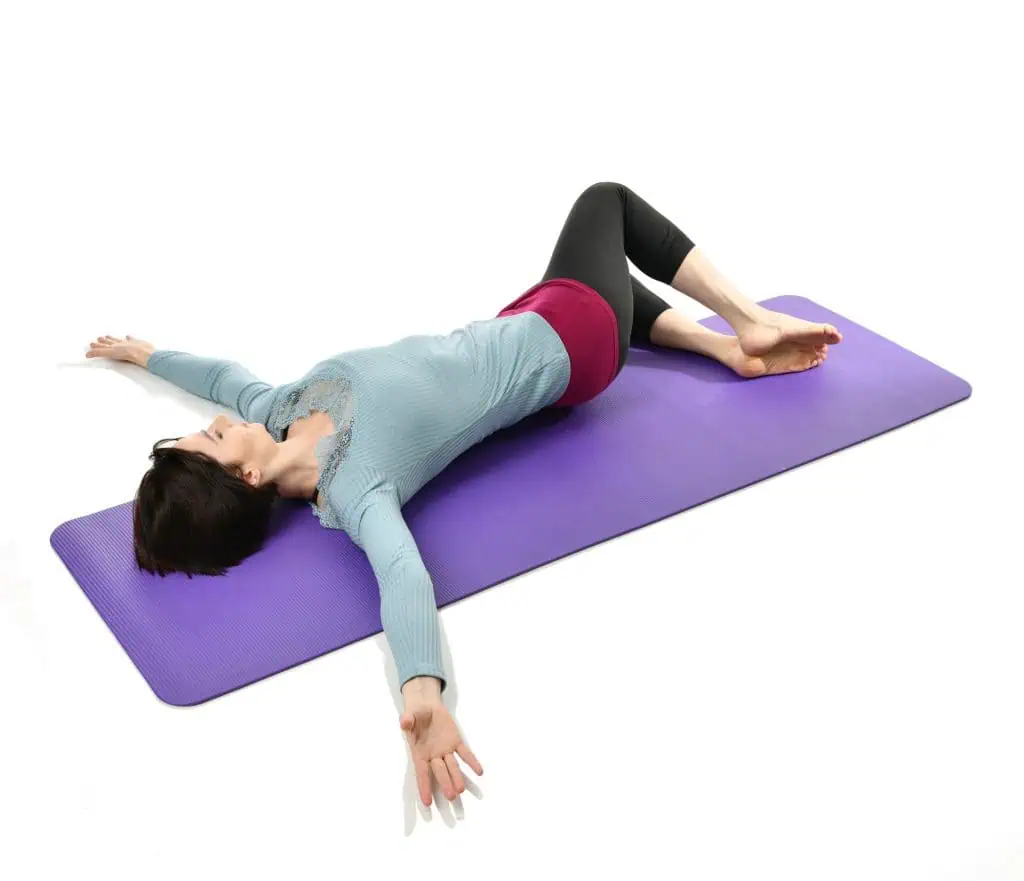
Knee-Pulling Stretch
Enhance the suppleness of your lower back and glute muscles with this stretch. Lie down, draw one knee toward the chest, and hold it tight. Keep your stretches for 15-30 seconds and alternate legs, aiming for 2-4 reps on each leg.
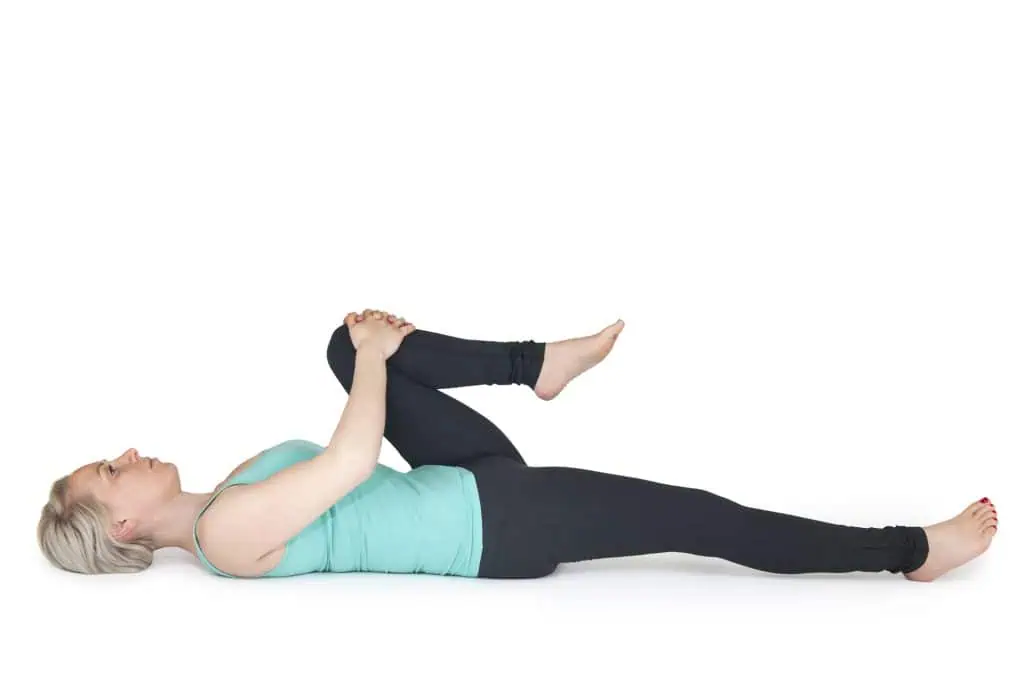
Mobility Exercise for Lower Back
Pelvic tilts can increase the flexibility of your lower back while strengthening your abs. Lie down with bent knees, press your lower back to the floor using your abs, and hold it for a few moments before relaxing. Aim for 8-12 repeats.
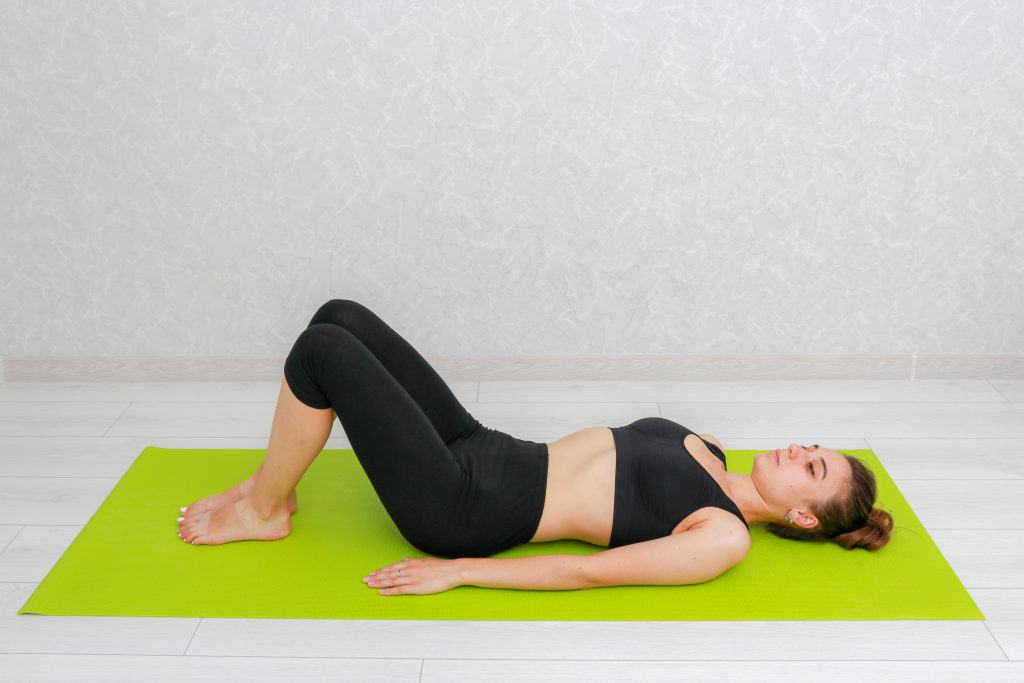
Hip Raise Exercise
Boost the strength of your glutes, hamstrings, and core with the bridge exercise. While on your back with bent knees, lift your hips to form a straight line from knees to shoulders. Hold for six counts before descending. Target 8-12 repetitions to stabilize your spine effectively.
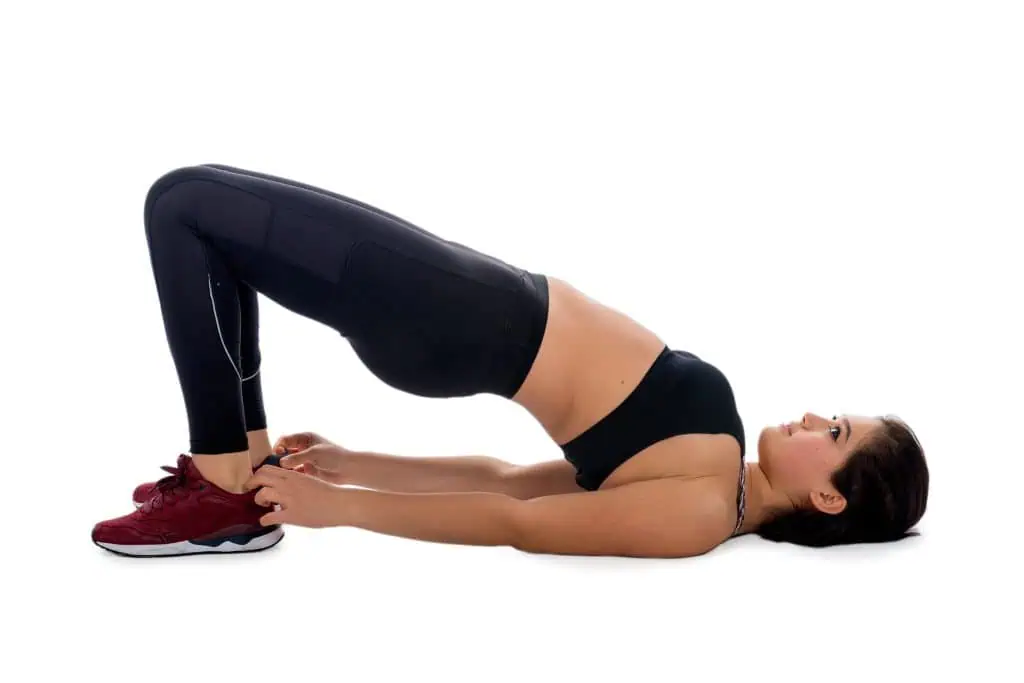
Stretches for Neck and Shoulders
Alleviate tension by carefully tipping your head towards each shoulder to feel a stretch on the neck. When addressing your shoulders, rotate them in circular motions, promoting flexibility.
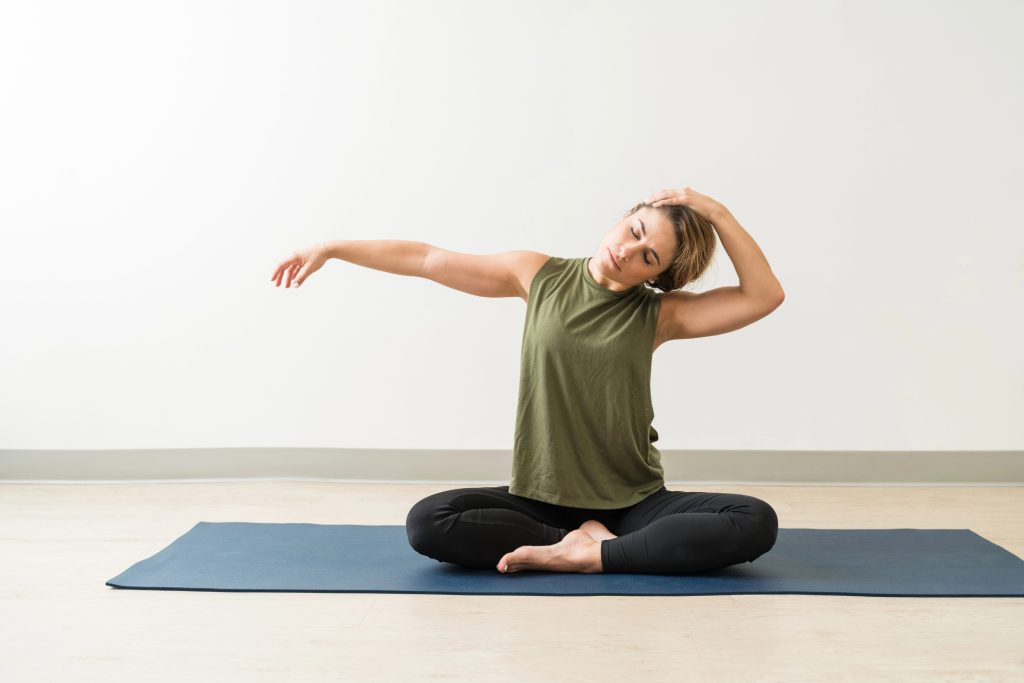
Horizontal Back Twist
For back muscles and glutes stretch along with improved spinal mobility, lie flat and cross one knee over to the opposite side while extending your arms out. Turn your head away from your knees, holding each side for 20-30 seconds.
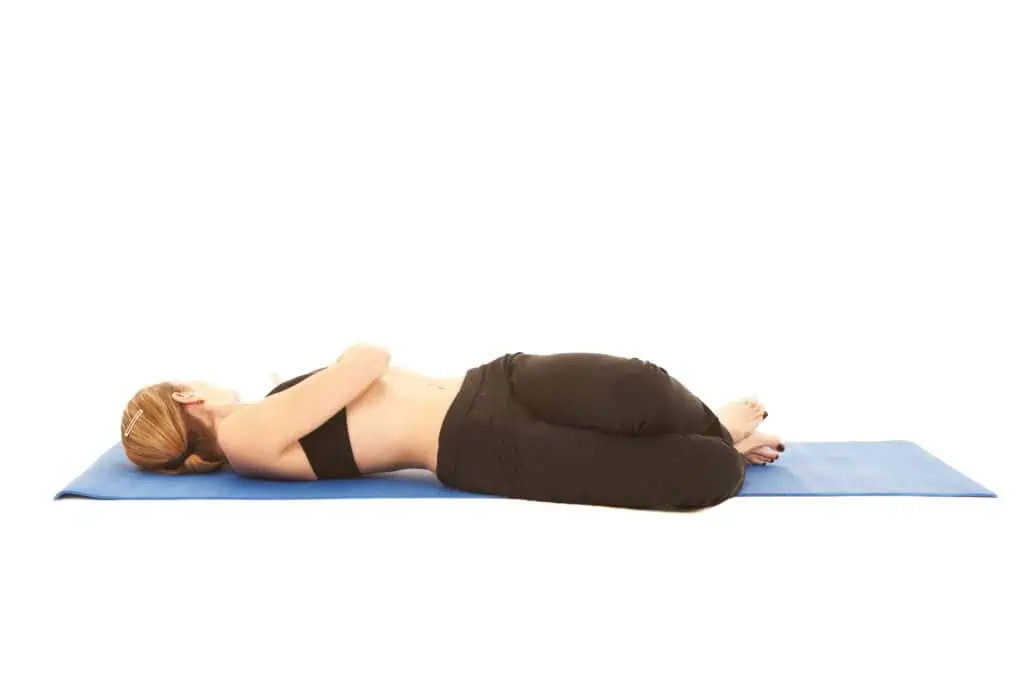
Best Practices for Stretching to Mitigate Back Discomfort
Ready your body with light activity, then stretch, holding each for at least 15-30 seconds. Strive to stretch both sides evenly and incorporate these stretches into your daily routine, breathing slowly throughout the process.
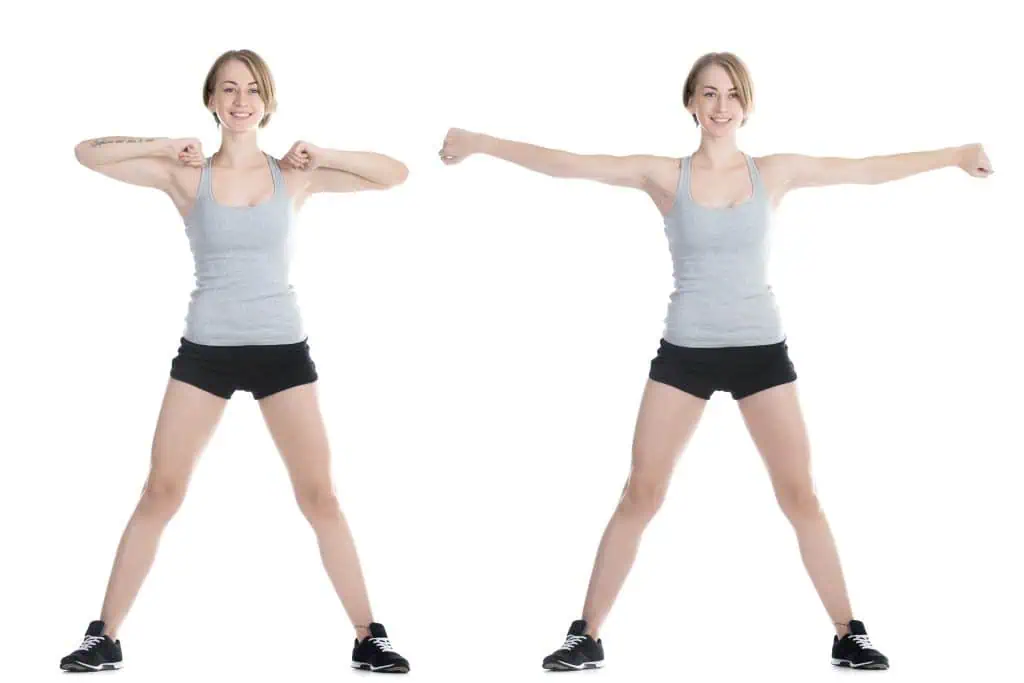
Stretch Mimicking Feline Movements
Engage your hands and knees, arch and round your back alternatively for 1-2 minutes. Such actions can ease back and neck tension and promote flexibility in the spine.
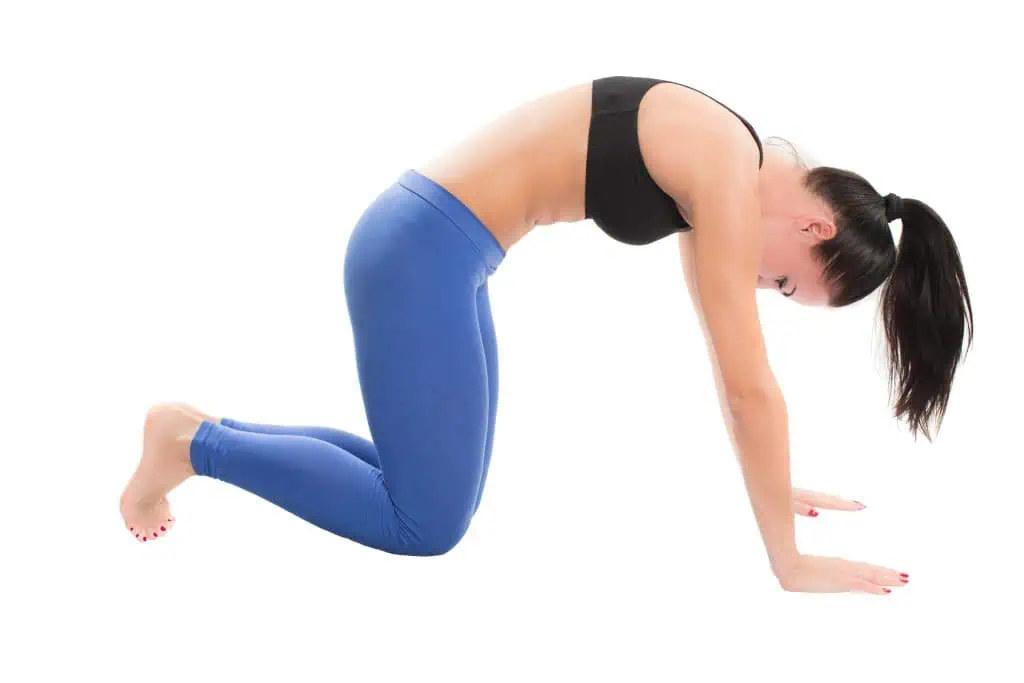
Pose of Cow Face
While sitting, place one arm above and the other behind you to clasp hands behind your back. Alternate both the arms and the cross-legged position after holding each for 30 seconds to a minute. It extends the hips, thighs, shoulders, and arms and may enhance your posture.
The Tilt of the Pelvis
The pelvic tilt involves lying down with your back flat against the floor. By contracting your abdominals, this simple movement can increase lower back flexibility and strengthen abdominal muscles. Each tilt should be held momentarily and repeated 8-12 times.

Answers to Common Questions
Quick Ways to Reduce Lower Back Pain with Stretches
To quickly lessen lower back discomfort, we can employ simple stretches such as the knee-to-chest stretch, which involves lying on your back and bringing one knee at a time towards your chest, holding it there to release tension. Additionally, performing gentle spinal twists can help relax tight muscles and increase mobility.
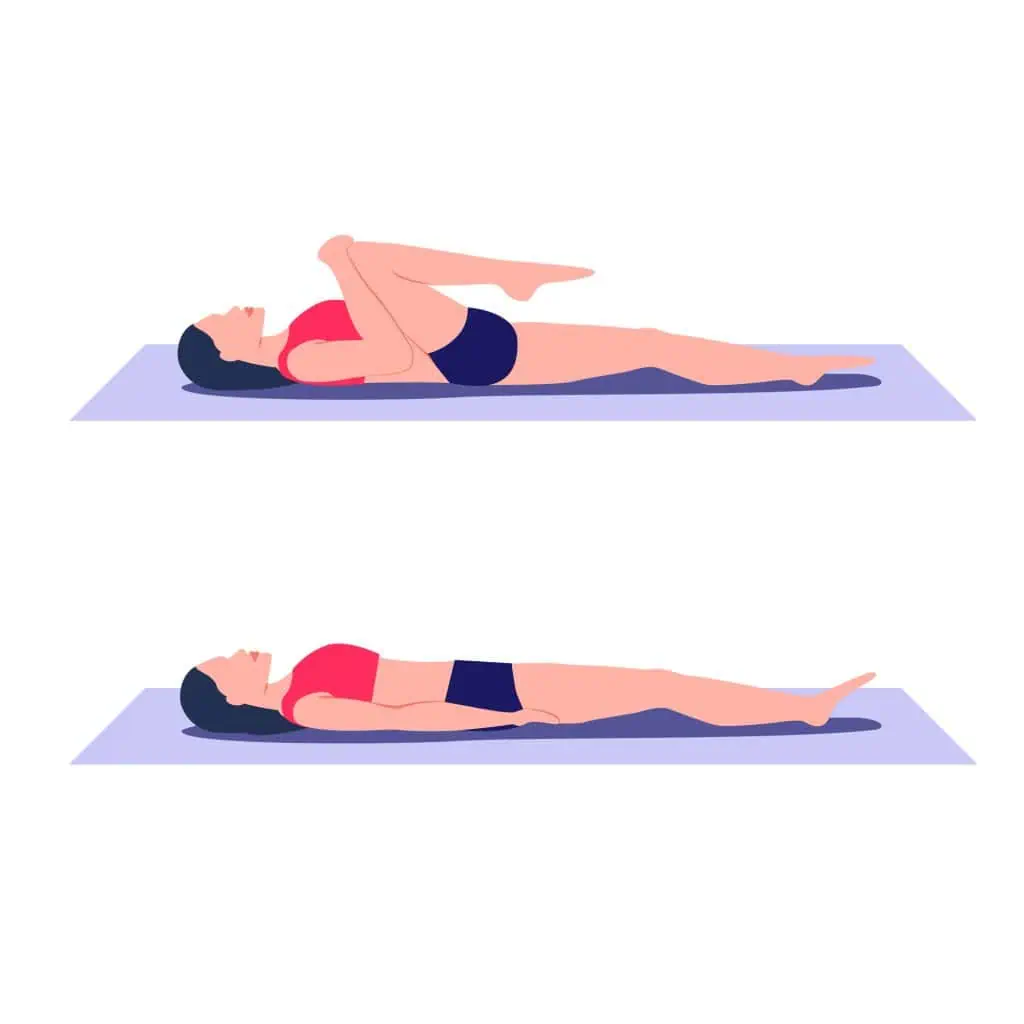
Physiotherapy Stretches for Lower Back Relief
Physiotherapy-approved stretches that offer relief include:
- Pelvic Tilts: Lie on your back, flatten your spine against the floor, and gently rock your pelvis.
- Bird Dog Stretch: Get on hands and knees, stretch one arm and the opposite leg, hold, and switch.
- Child’s Pose: Sit on heels, fold forward, and extend arms to relax your spine.
Utilize these stretches consistently to aid in managing lower back pain.
Morning Stretches to Alleviate Lower Back Stiffness
Begin your day with these stretches to ward off pain:
- Cat-Cow Stretch: On all fours, alternate between arching and rounding your back.
- Lumbar Extension Stretches: Lie on your stomach and prop on elbows, slightly arching your back.
- Incorporate gentle yoga poses such as Downward Dog to energize and stretch your back muscles.
Most Effective Stretch for Lower Back Pain
The Piriformis Stretch is highly effective for targeting the lower back and relieving sciatic pain. Sit and cross one leg over the other, pull the knee toward the opposite shoulder, and hold this position to stretch deeply.
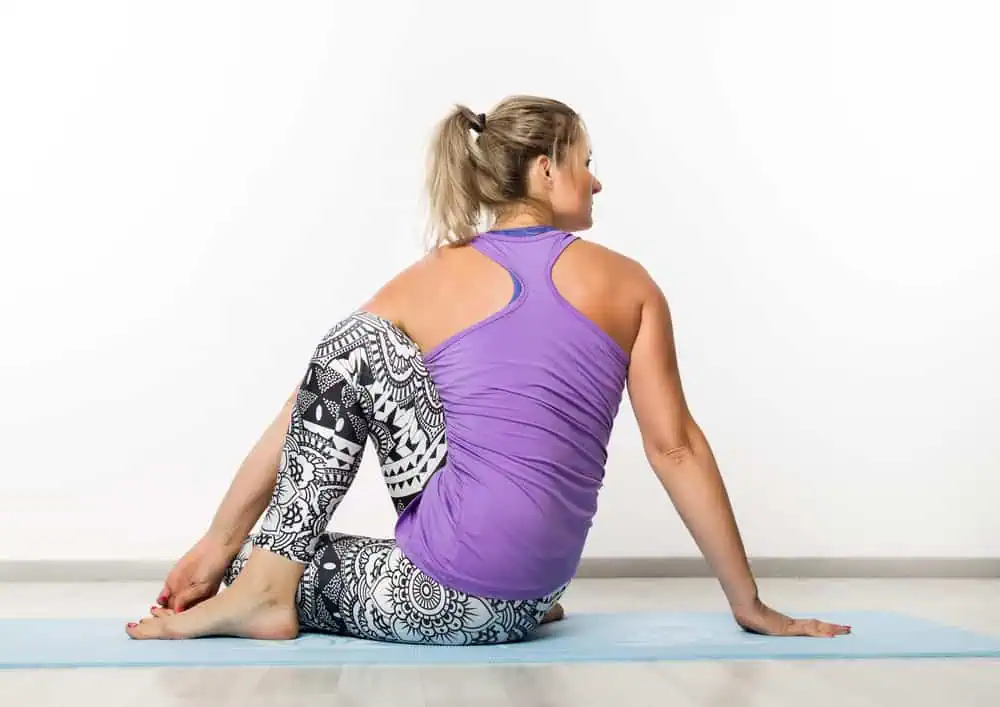
Stretches to Avoid with Lower Back Pain
If you have lower back pain, avoid toe-touching stretches and full sit-ups as they may put undue strain on your back. Instead, focus on low-impact stretches that gently lengthen your spine and strengthen your core.
Recommended Stretches for Upper Back Pain
For upper back discomfort, these stretches can help:
- Doorway Stretch: Stand in a doorway. Place forearms against the frame and lean forward.
- Neck Tilts and Turns: Gently tilt your head from side to side. Then, rotate to stretch neck muscles.
- Shoulder Blade Squeeze: Sit or stand. Pull your shoulder blades together, then release.
Looking for exercises for Sciatica? – Check these 9 effective pain relief exercises










